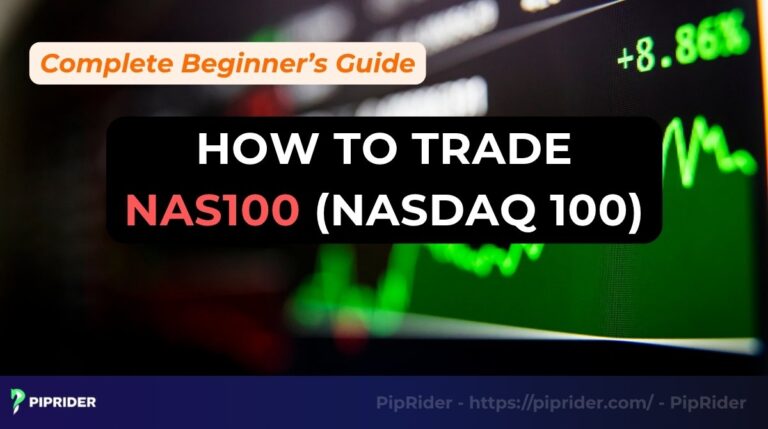If traders are new to currency trading, “What are pips in forex?” is one of the first and most fundamental questions they’ll ask. Understanding this concept is essential, as it forms the basis for everything from calculating the trade outcomes to managing risk.
This guide is designed to make it simple. Piprider will provide a clear, easy-to-understand definition of pips, explain how to calculate their value with practical examples, and clarify why they are crucial for measuring profits and losses in forex currency trading. Traders will also learn about the difference between pips and pipettes, special cases like Japanese Yen pairs, and how trade size affects a pip’s worth.
Key Takeaways
- A pip is the smallest standardized unit for measuring a price change in the forex market.
- For most pairs, it is the 4th decimal place (0.0001), but for Japanese Yen pairs, it’s the 2nd decimal place (0.01).
- A pipette represents a fraction of a pip (1/10th), allowing for more precise pricing from some brokers.
- Crucially, the monetary worth of a pip is not fixed; it is determined by lot.
- A pip’s movement is always reflected in the market quote provided by your broker.
1. What Are Pips in Forex?
A pip, which stands for “percentage in point” or “price interest point,” is the smallest standardized unit of price movement in the forex market. As a fundamental concept of foreign exchange, it is used to measure changes in a currency pair’s exchange rate.
For most currency pairs, a pip is the fourth decimal place (0.0001). For example, if the GBP/USD exchange rate moves from 1.2580 to 1.2581, that is a change of one pip. This small unit of measurement is the key to defining the profit or loss in every trade. While a pip measures price movement in forex, a basis point (bps) is a different metric. This unit is used in interest rate and bond markets, with a single basis point equaling 0.01%.
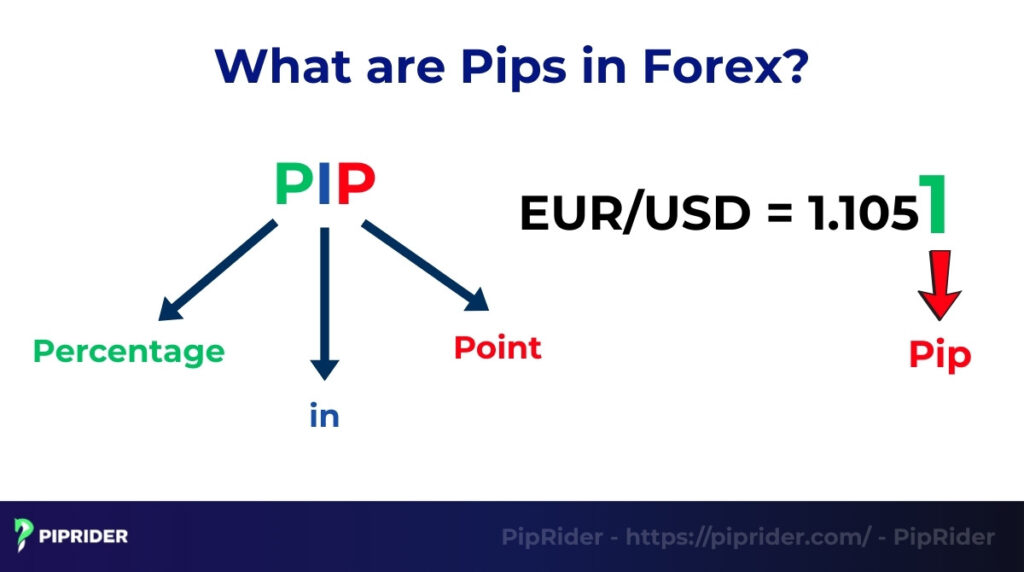
1.1. Pipettes: Fractional Pips for More Precision
To provide more precise pricing, many forex brokers quote currency pairs with an extra decimal place. This smaller, fractional pips unit is called a pipette. It is equal to one-tenth of a pip. For example, in the EUR/USD pair, while a pip is the fourth decimal place (0.0001), the pipette is the fifth decimal place (0.00001).
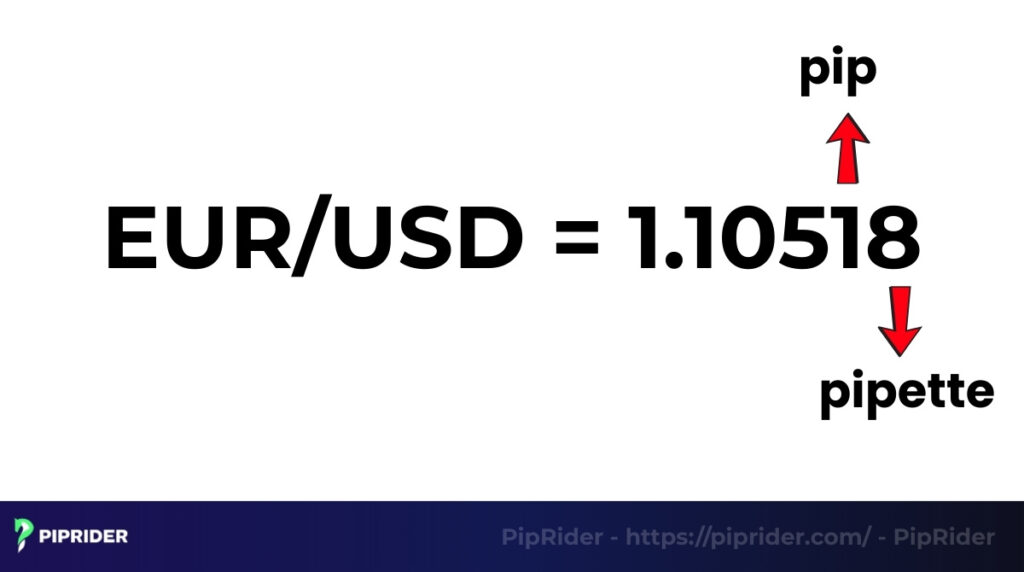
1.2. Special Case: Japanese Yen (JPY) Pairs
Japanese Yen (JPY) pairs are a notable exception to the standard rule, as they are quoted with only two decimal places.
For currency pairs such as EUR/JPY and USD/JPY, a pip represents a change in the second decimal place (0.01). Consequently, the pip value for these pairs is calculated differently, typically as 0.01 divided by the current exchange rate.
For example, let’s calculate the pip value for a mini lot (10,000 units) of USD/JPY when the exchange rate is 145.50. The calculation would be: (0.01 / 145.50) x 10,000 = $0.687. This means each pip of movement for this trade is worth approximately $0.69.
This table summarizes the two main conventions:
| Currency Pair Type | Decimal Places | Pip Size |
| Most pairs (e.g., EUR/USD) | 4 | 0.0001 |
| Japanese Yen pairs (e.g., USD/JPY) | 2 | 0.01 |
2. How to Calculate Pip Value (with Practical Examples)
A pip’s monetary value isn’t fixed; it changes based on three main factors: the currency pair being traded, the current exchange rate, and trade size. The general formula is:
Pairs where the USD is the second currency (the quote currency) have a simpler calculation. With a standard lot of 100,000 units, a single pip (0.0001) is always worth $10. Other pairs require traders to apply the general formula and convert the value into the account’s currency.
Practical Calculation Examples
Understanding the definition of a pip is one thing; seeing it in action and calculating its financial impact is another.
Example 1: EUR/USD (Standard Lot)
Let’s say you believe the Euro will strengthen against the US Dollar:
- Action: You buy 1 Standard Lot (100,000 units) of EUR/USD at an entry price of 1.1050.
- Pip Value: For a Standard Lot of EUR/USD, each pip is worth $10.
- Outcome: The price moves in your favor, and you close the trade at 1.1100.
- Calculation:
- Price Movement: 1.1100 (Exit) – 1.1050 (Entry) = 0.0050 which equals 50 pips.
- Monetary Gain: 50 * $10/pip = $500
Example 2: USD/JPY (Mini Lot)
Now, let’s consider a Japanese Yen pair with a smaller lot:
- Action: You sell 1 Mini Lot (10,000 units) of USD/JPY at an entry price of 110.25.
- Pip Value: For this trade, let’s assume each pip is worth $0.90 USD.
- Outcome: The price moves in your favor, and you close the trade at 110.15.
- Calculation:
- Price Movement: 110.25 (Entry) – 110.15 (Exit) = 0.10 which equals 10 pips.
- Monetary Gain: 10 * $0.90/pip = $90
Let’s also consider the GBP/USD pair: if you trade 1 standard lot and it moves 50 pips, that’s $500. Similarly for USD/CAD, the pip value would be calculated based on its specific exchange rate.
3. Why Are Pips Important in Forex Trading?
Pips are the fundamental building blocks for everything from calculating trade outcomes to managing risk. They are the universal language of the forex market.
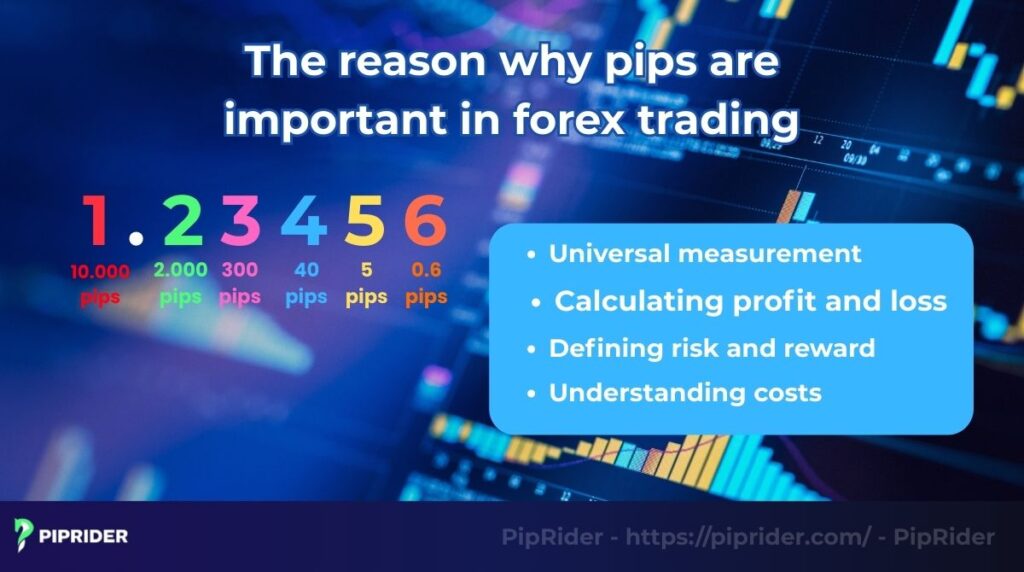
Here’s why they are so critical:
- Universal measurement: Pips provide a standardized way to express price changes across all different currency pairs.
- Calculating profit and loss: The number of these units a trade gains or loses, multiplied by the pip value, directly translates into a monetary profit or loss.
- Defining risk and reward: These small increments are the basis of risk management. Traders define their risk by setting stop-loss orders a specific number of pips away from their entry.
- Understanding costs: Transaction costs, like the bid-ask spread charged by brokers, are measured in pips. The spread is a key cost factor.
Read more:
Forex Trading Terminology: The Ultimate A-Z Guide
CFD Trading: A Comprehensive Guide For Beginners
4. How Lot Size Influences Pip Value and Trading Outcome
Think of a pip as measuring the distance a price travels, while the lot size acts as the financial multiplier for that distance. Chosen trade size sets the cash value for each point of price movement, which ultimately defines market exposure and the position value.
Smaller lot sizes in forex result in smaller pip values. This means lower potential profits, but also, more importantly, lower risk. This makes micro lots and mini lots highly suitable for beginners or for traders focused on precise risk management, especially when considering leverage.
| Lot Type | Units | Pip Value (approx. USD for EUR/USD) |
| Standard | 100,000 | $10.00 |
| Mini | 10,000 | $1.00 |
| Micro | 1,000 | $0.10 |
For example, a 10-pip move on a standard lot of GBP/USD means a significantly different financial impact than on a micro lot of USD/CAD. And a trade involving CAD/JPY would have its own specific pip value.
5. Pips vs. Basis Points (bps): A Key Distinction
While they both measure very small changes, it’s crucial not to confuse pips with another common financial metric: bps
- Pips are used in the Forex market to measure the change in a currency exchange rate. A pip’s value is absolute (e.g., 0.0001 for EUR/USD).
- The bps are used in the context of interest rates and bonds to measure a change in yield. A basis point is a unit of percentage (1 bps = 0.01%) (Investopedia, 2023).
6. Common Mistakes New Traders Make Regarding Pips
Understanding pips is a crucial first step, but new traders often stumble on a few common issues. Being aware of these pitfalls can help traders avoid costly errors.
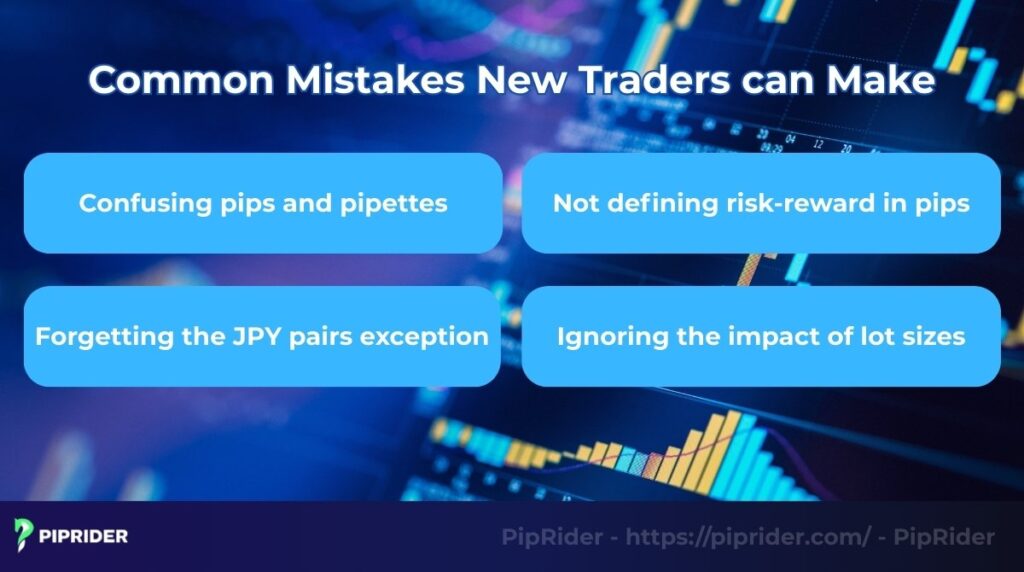
- Confusing pips and pipettes: Mistaking small pipette moves for full pip moves can lead to a significant miscalculation of profit or loss.
- Forgetting the JPY pairs exception: Applying the four-decimal places rule to Japanese Yen pairs is a frequent error that results in incorrect pip values.
- Ignoring the impact of lot sizes: Thinking a “10-pip loss” is always the same amount of money. The monetary value of pips is meaningless if traders don’t factor in the lot.
- Not defining risk-reward ratio in pips: Professionals define their risk (stop-loss) and reward (take-profit) levels in these units before entering a trade.
Consider a pair like USD/CAD; a miscalculation here due to misunderstanding pips can quickly impact the trading platform balance. Similarly, a small error on CAD/CHF could lead to unexpected losses.
7. Frequently Asked Questions (FAQ)
8. Summary
In conclusion, what are pips in forex? They are the essential language of the forex market. These units are standardized for measuring price movements, allowing traders to quantify results, define risk, and communicate effectively. This guide has shown traders how to define a pip, handle the JPY pairs exception, and understand how the pip value is directly influenced by the chosen lot size.
Mastering this critical building block is non-negotiable for anyone serious about forex trading success. To continue building your foundational knowledge, we encourage you to explore more guides in our Learn Forex category on Piprider.








